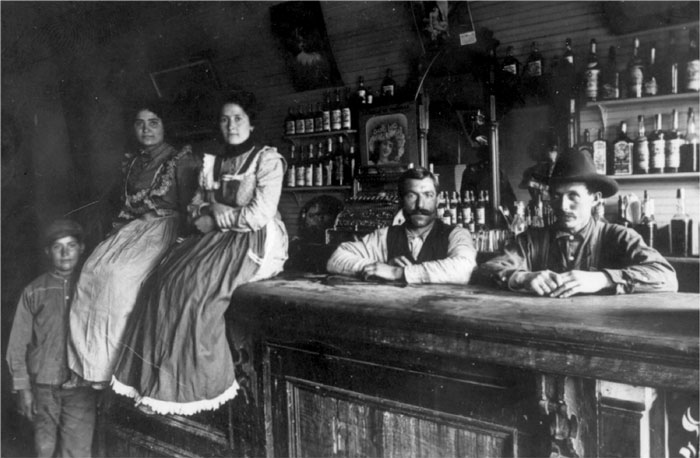Life in the Mining Towns
Men worked the mines, but women flocked to the area as well. In Storey County, Nevada, the heart of the Comstock Lode, the 1875 census showed that women made up about half the population. Most employed women worked long hours as domestics in boardinghouses, hotels, and private homes. Prostitution, which was legal, accounted for the single largest segment of the female workforce. Most prostitutes were between the ages of nineteen and twenty-four, and they entered this occupation because few other well-paying jobs were available to them. The demand for their services remained high among the large population of unmarried men. Yet prostitutes faced constant danger, and many were victims of physical abuse, robbery, and murder.

As early as the 1880s, gold and silver discoveries had played out in the Comstock Lode. Boomtowns, which had sprung up almost overnight, now became ghost towns as gold and silver deposits dwindled. Even more substantial places like Virginia City, Nevada, experienced a severe decline as the veins of ore ran out. One revealing sign of the city’s plummeting fortunes was the drop in the number of prostitutes, which declined by more than half by 1880. The mining business then shifted from gold and silver to copper, lead, and zinc, centered in Montana and Idaho. As with the early prospectors in California and Nevada, these miners eventually became wageworkers for giant consolidated mining companies. By the end of the nineteenth century, the Amalgamated Copper Company and the American Smelting and Refining Company dominated the industry.
Mining towns that survived became only slightly less rowdy places, but they did settle into more complex patterns of urban living. At its height in the 1870s, Virginia City contained 25,000 residents and was among the largest cities west of the Mississippi River. It provided schools and churches and featured such cultural amenities as theaters and opera houses. Though the population in mining towns remained predominantly young and male, the young men were increasingly likely to get married and raise families. Residents lived in neighborhoods divided by class and ethnicity. For example, in Butte, Montana, the west side of town became home to the middle and upper classes. Mine workers lived on the east side in homes subdivided into apartments and in boardinghouses. The Irish lived in one section; Finns, Swedes, Serbs, Croatians, and Slovenes in other sections. Each group formed its own social, fraternal, and religious organizations to relieve the harsh conditions of overcrowding, poor sanitation, and discrimination. Residents of the east side relied on one another for support and frowned on those who deviated from their code of solidarity. “They didn’t try to outdo the other one,” one neighborhood woman remarked. “If you did, you got into trouble. . . . If they thought you were a little richer than they were, they wouldn’t associate with you.” Although western mining towns retained distinctive qualities, in their social and ethnic divisions they came to resemble older cities east of the Mississippi River.
Exploring American HistoriesPrinted Page 497
Exploring American Histories Value EditionPrinted Page 368
Chapter Timeline